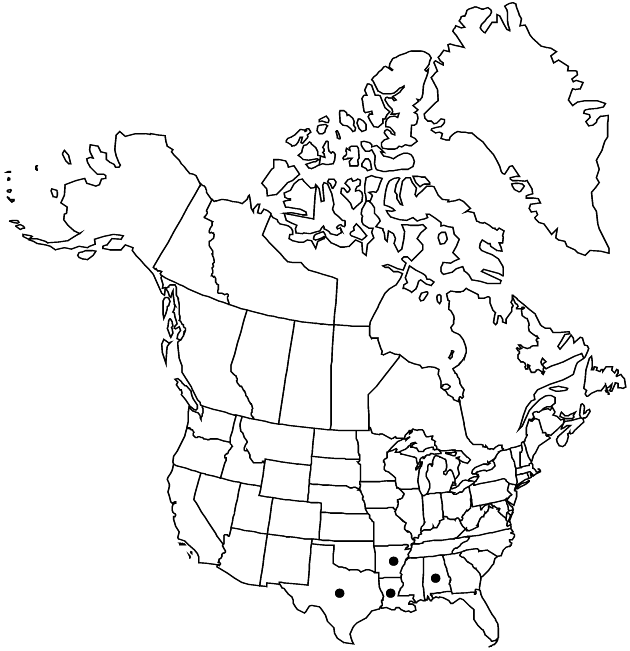Eupatorium lancifolium
Fl. S.E. U.S., 1167. 1903.
Perennials, 40–100+ cm. Stems (from short rhizomes) single, branched distally, usually glabrous or glabrate, sometimes pilose. Leaves usually opposite (distal sometimes alternate); sessile or subsessile (petioles to 5 mm); blades 3-nerved from bases, lanceolate to lance-linear, 30–50 × 5–13 mm, bases narrowly cuneate, margins serrate, apices acute, faces glabrous adaxially, sparsely pilose abaxially, densely glanddotted. Heads in corymbiform arrays. Phyllaries 7–10 in 2–3 series, elliptic, 1–4.5 × 0.2–0.8 mm, apices rounded, abaxial faces pilose, glanddotted. Florets 5; corollas 2.5–3 mm. Cypselae 2.5–2.8 mm; pappi of 30–40 bristles 3.5–4 mm. 2n = 20.
Phenology: Flowering Aug–Sep.
Habitat: Dry, rolling terrain, clay soils, shade to sun, shortleaf pine and oak woods
Elevation: 50–200+ m
Distribution

Ala., Ark., La., Tex.
Discussion
Eupatorium lancifolium has been combined with E. semiserratum or listed within it as a subspecies; it differs in its habitat as well as in having leaves that are somewhat smaller, typically a dull blue-green (in contrast to yellow-green in E. semiserratum), and 3-nerved from bases of blades.
Selected References
None.
Lower Taxa
"fine" is not a number.